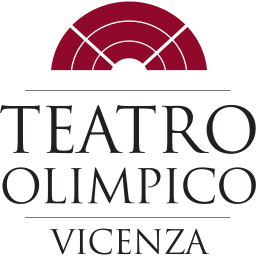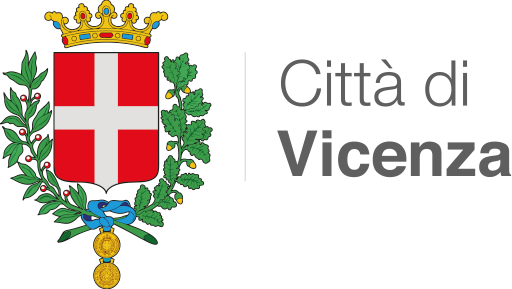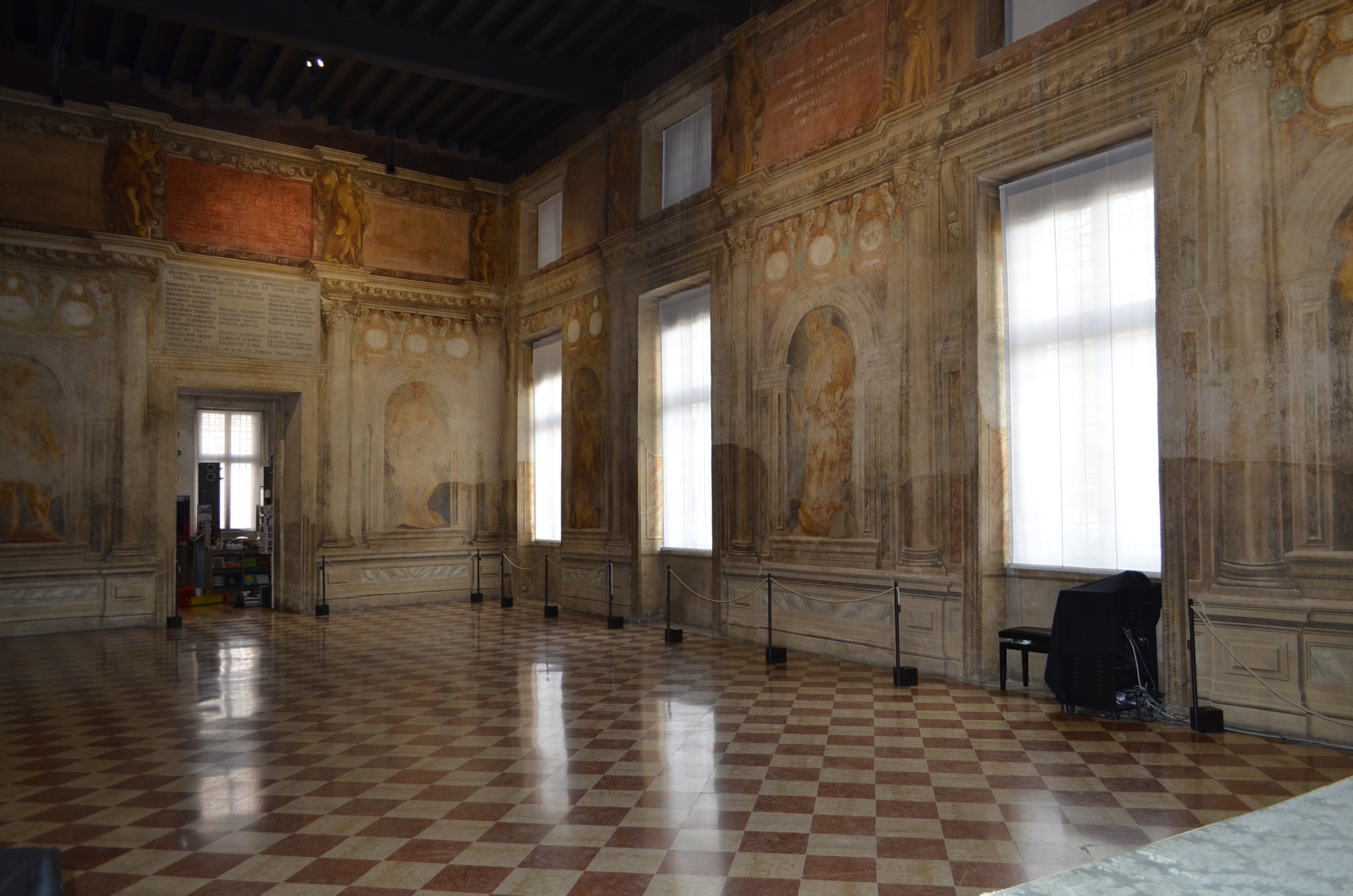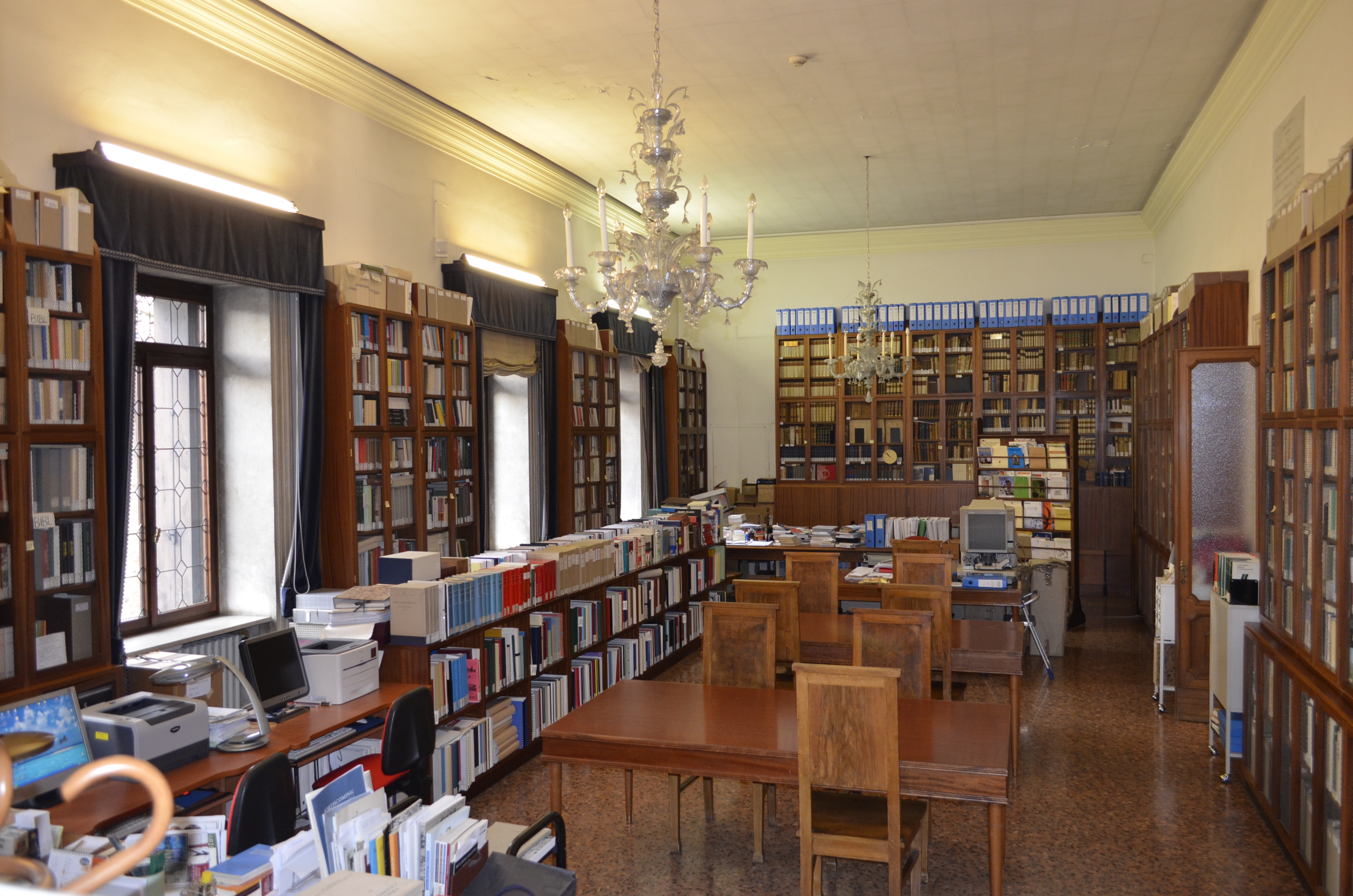Accademia Olimpica
Building of the Teatro Olimpico was commissioned by the Accademia Olimpica, a cultural association of noblemen and artists, founded in Vicenza in 1555 by 21 of its citizens.
It wanted to have a different approach from previous academies (the one founded by GianGiorgio Trissino, which was based in the suburban villa of Cricoli, the “dei Costanti” academy, set up by clergyman Gerolamo Gualdo). Its members in fact included, as well as noblemen, also scholars of Greek and Latin and artists. This criterion of independence in its formation was intended to guarantee its vitality.
From the very beginning, the intention of all its members was to cultivate all the arts, including arms and music, with a certain preference for scientific disciplines.
In addition to Valerio Chiericati and Girolamo da Schio —who were the promoters—the academics included Anton Maria Angiolelli, Count Da Monte, Giacomo Pagello, Giuseppe Ovetari, Elio and Silvio Belli, Andrea Palladio, Bernardino Trinagio, Vincenzo Magrè and, a little later, Antonio Fasolo and Gian Battista Maganza, both famous painters, the latter also known as a rural poet.
One of the preferred activities was that of theatrical performances, which led to the idea for a permanent theatre and initial studies were also carried out into the feasibility of permanent headquarters for the institution in the buildings of the loco delle prigioni vecchie, with construction commissioned to Palladio.
Building of the Teatro Olimpico, built to the model of ancient theatres and inaugurated in 1585 with the performance of Oedipus Rex by Sophocles, was funded by voluntary donations made by the academics, who were allowed to decorate it with statues of themselves.
Later, a large number of rooms were added to the theatre for the academic meetings, the so-called “Odeo”, which is still used for the sessions.
The Accademia Olimpica continued its activity uninterrupted down through the centuries, alternating cultural and social events.
There were also schools adjacent to the theatre: for horse-riding and arms handling, letters and sciences. In 1741 the School of experimental philosophy took shape, for which the city was asked to contribute with the donations made to the Mount of Piety charity organisation. When Goethe visited Vicenza in 1786, he asked to attend a session at the Accademia.
The fall of the Republic of Venice led to a difficult period for the life of the Olimpica, due to the Napoleonic decree in 1810, faced with the risk of suppression and consequent confiscation of its assets, the Accademia decided to waive its direct ownership of the theatre, headquarters and adjacent buildings and in 1813 it handed them over to the city of Vicenza, maintaining the sole right to perpetual use.
The Accademia thus entered a period of non-activity that lasted until 1843, when the Imperial Government conceded its reactivation under the title of “Accademia Olimpica di scienze, lettere ed arti”, namely of sciences, letters and the arts.
The presence of members such as Camillo Franco and Valentino Pasini might give some idea of the Accademia’s political direction: the liberal new ideas that were generating the Risorgimento. This renewal was evident when Francesco Secondo Beggiato was nominated president in 1851, marking the start of a very busy period for the institution. In 1857, the Meteorological (meteoric) Observatory was created, headed first by Beggiato himself and then by Almerico da Schio, who acted as moderator for over sixty years.
In 1858, mainly due to the initiative of Fedele Lampertico, the public school for drawing and modelling was created, which funded by organisations and benefactors, until 1927 was run directly by the Accademia.
This period saw the role of president covered alternately by Fedele Lampertico, Giacomo Zanella, Antonio Fogazzaro and Almerico da Schio.
In 1935, the Accademia Olimpica was recognised as a non-profit organisation.
Paralysis of activity by the Accademia in August 1943 was joined in 1944 by destruction of the Observatory, which “with all the expensive equipment, collapsed onto the rooms used as headquarters by the Accademia, knocking down and destroying everything”. The archive and the library with over 20,000 books were lost, while the Teatro Olimpico survived miraculously intact.
After the liberation, for some three years the Accademia was run by a government-appointed commissioner; in 1949 Egidio Tosato, member of parliament and member of the Constituent Assembly, was elected president, succeeded ten years later by Mariano Rumor.
The Accademia thus left behind it the tormented post-war and reconstruction period to focus, once its institutional organisation was defined, on the new realities that were emerging, not just on a city level.
More informations at: www.accademiaolimpica.it – Accademia Olimpica Facebook page
ACCADEMIA OLIMPICA
Accademia Olimpica di Vicenza
Largo Goethe 3, 36100 Vicenza
Sito web: https://www.accademiaolimpica.it/
Tel. 0444 324376
Email segreteria@accademiaolimpica.it
FB: @accademiaolimpica.it
YT: Accademia Olimpica





